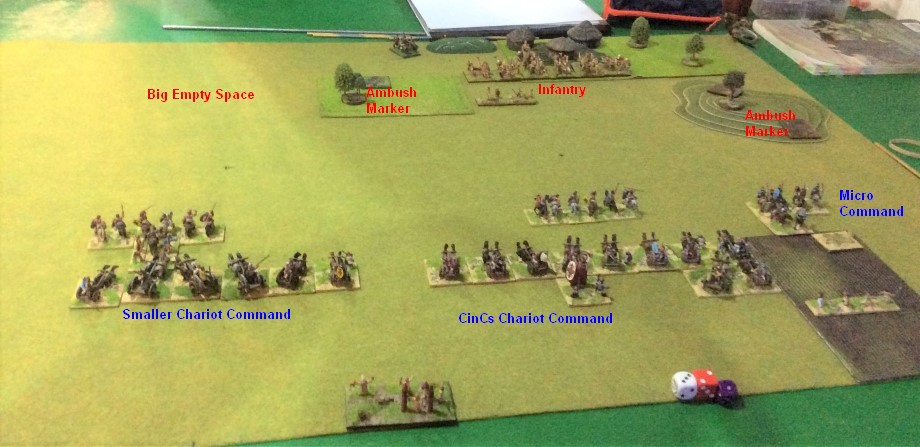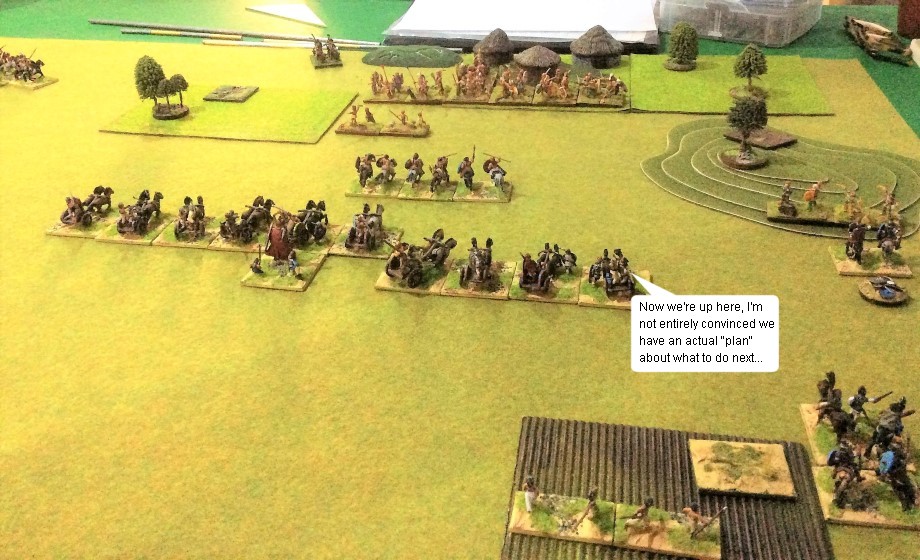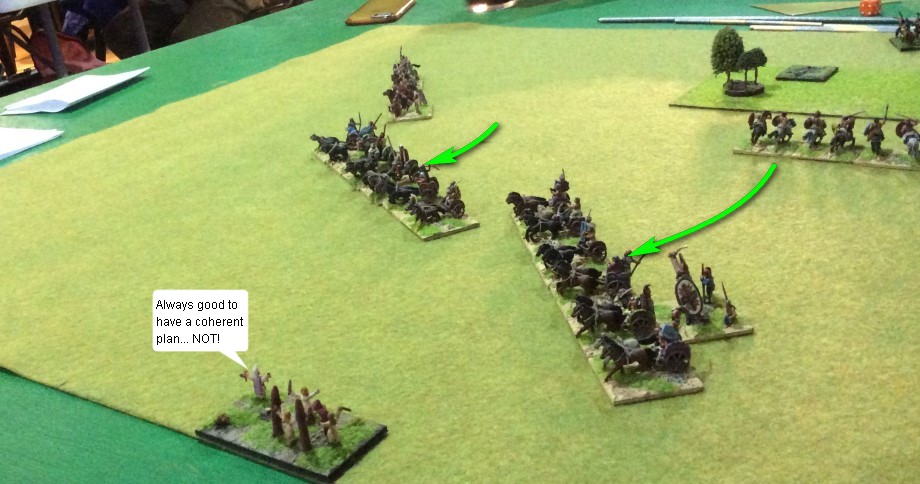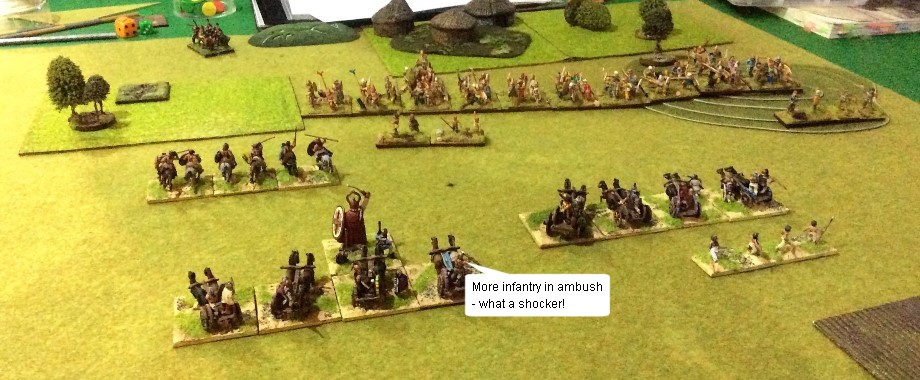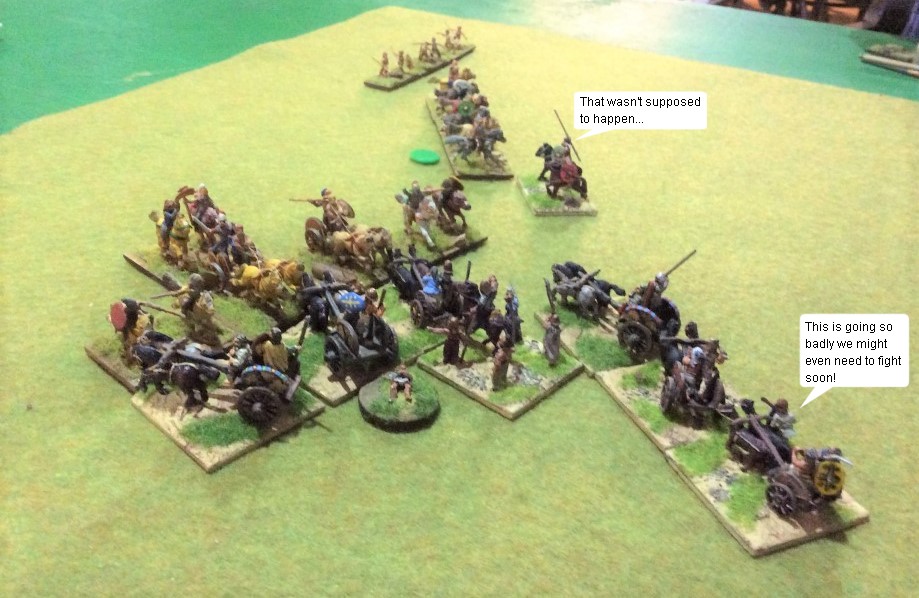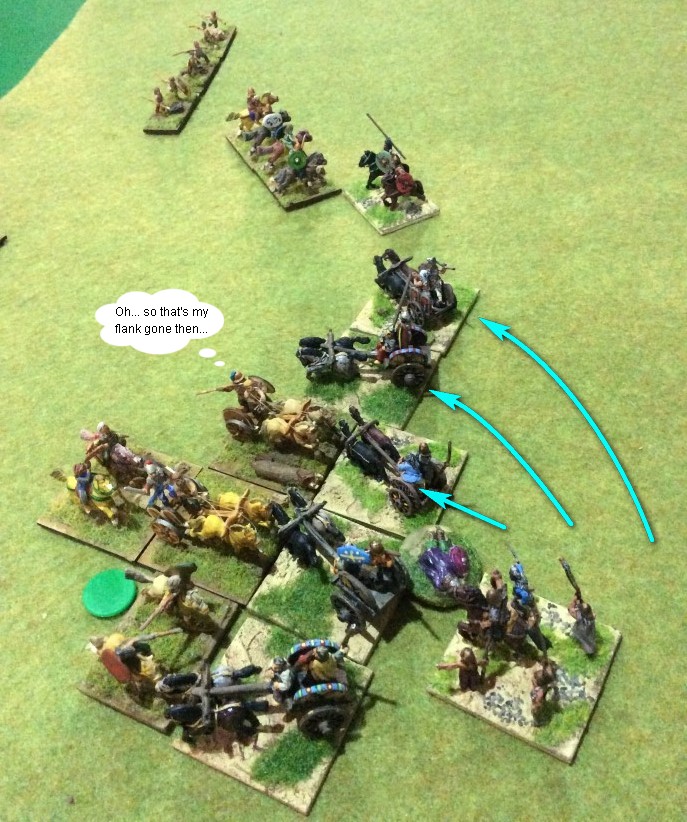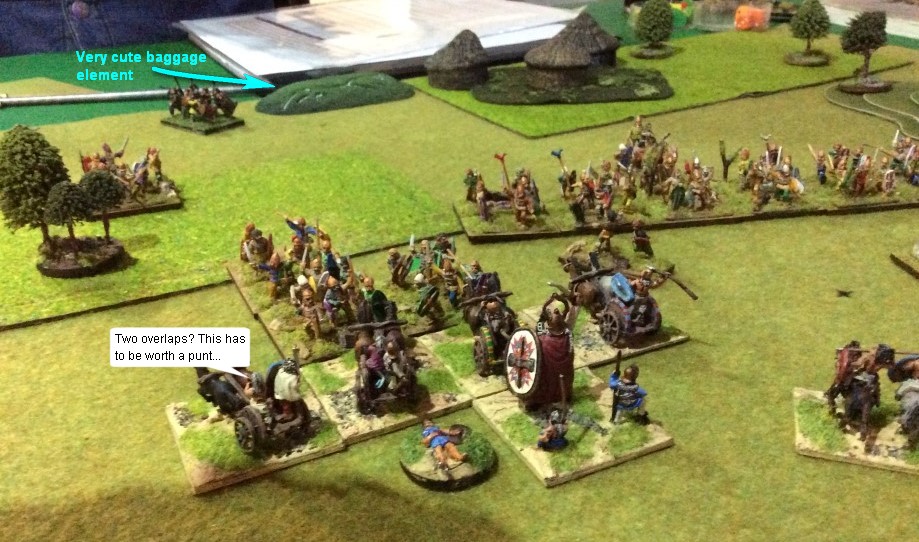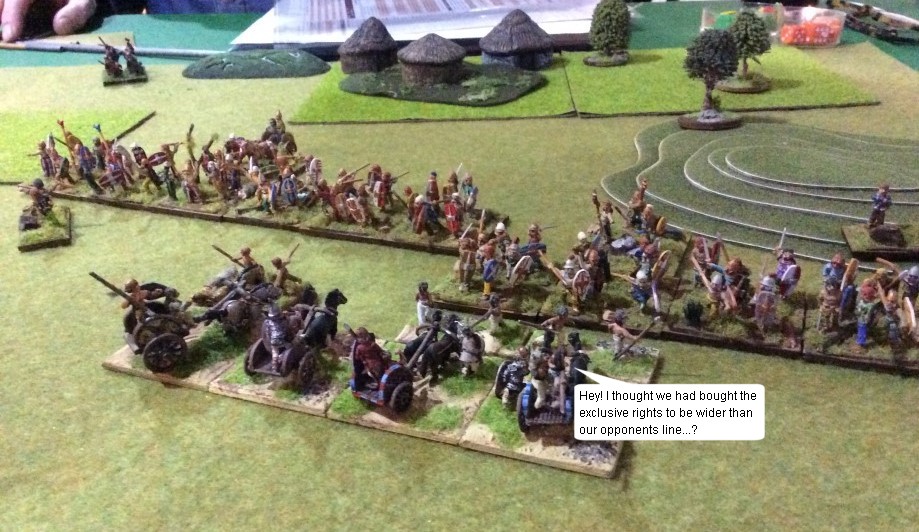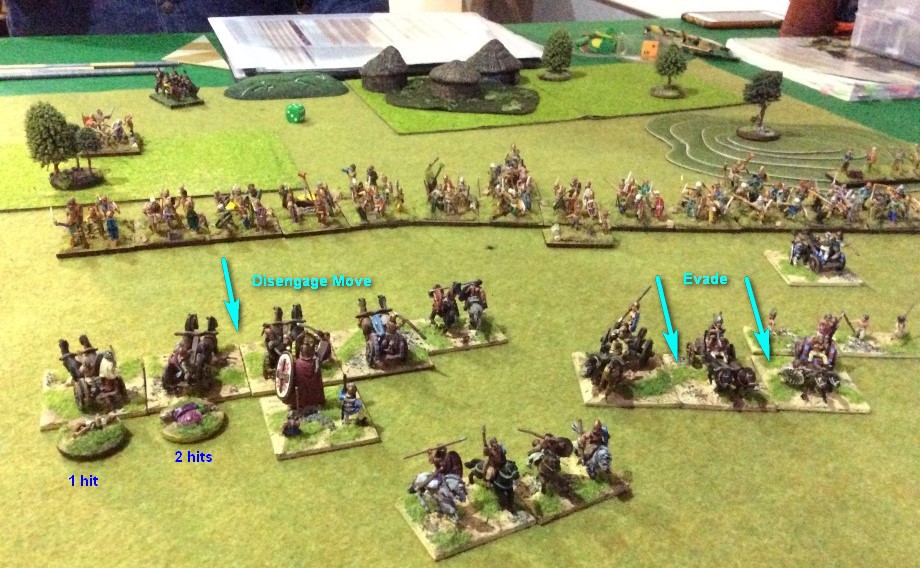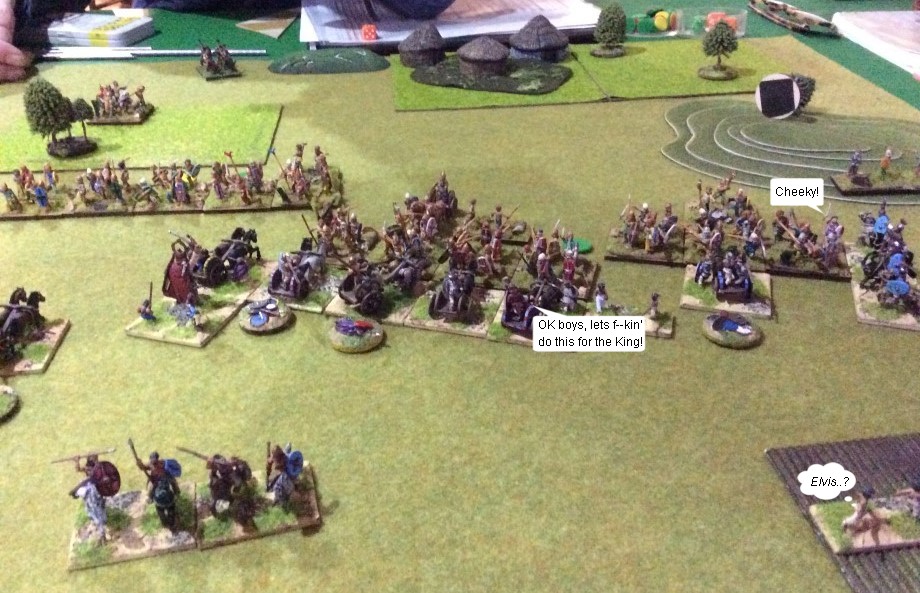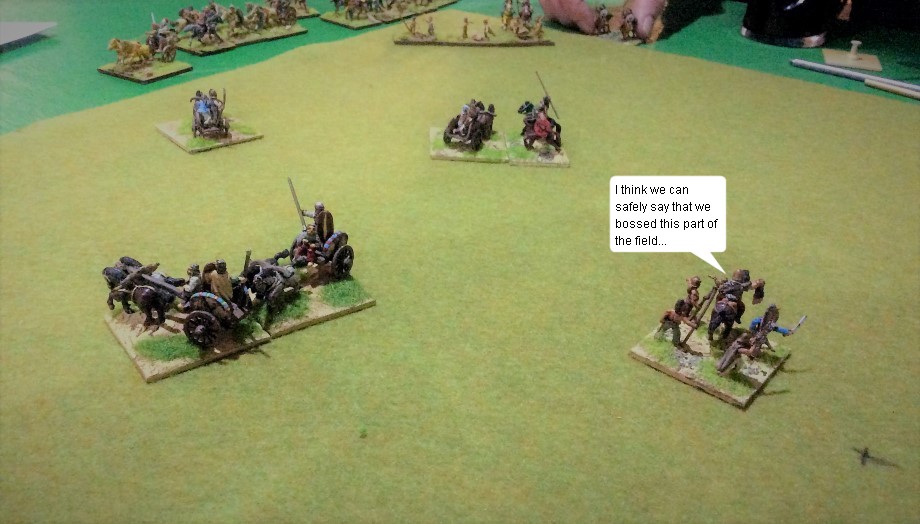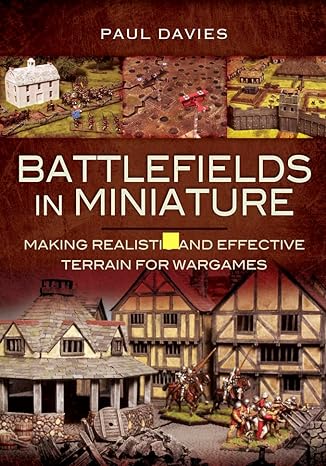Roman & Classical at the CLWC Winter Invitational 2017
Ancient British vs Ancient British
Game 1 Ancient British vs Carthaginian
Game 2 Ancient British vs Seleucid
Game 3 Ancient British vs Ancient British
Its the third game. Snow is thinking about settling outside, in a fashion which strikes terror into Londoners but would barely register derisrion north of Watford Gap (that's a place, not a clothing store for any non-UK readers). The table looks well set, with the Brits in 3rd place, a position which sets them up for a Very British Civil War against another British force - although one presumably unlikely to have taken the chariotry option. Assuming they are a more normal composition does however mean that they are unlikely in the extreme to want an open table - so for the first time Cassivellaunus' men will need to find a way through terrain.
The lists for the Ancient British and Ancient British from this game, as well as all the other lists from the games at CLWC Winter Invitational can be seen here in the L'Art de la Guerre Wiki.
And, with a degree of inevitability, the terrain did indeed fall in one part of the table much thicker and faster than the snow outside. This sort of counted as a partial success, however the opposing Brits, clearly by now aware of the mounted nature of Cassivellaunus army, had ambushed the vast majority of their troops out of sight and safe in the terrain. Picking them out would be tough in this most British or very British Civil Wars, with only the elite warriors currently in view.
Hoping that the opposition would have deployed at least something in the vast open space, but mindful that they may no my army was arranged with the Strategist command in the centre, able to go in both directions, with the tiny distraction command on the right and the other block of Chariots on the left.
With little to aim for, Cassivellaunus pushed his battle wagons forward to bottle up the enemy infantry and possibly tempt them out of their woodland lair. On the far right the micro command also managed to unearth a couple of skirmishing slingers hiding in the woods.
Rather Tedious Celtic Music
But, with the first roll of the enemy command dice it became clear that not all of the enemy army were hiding in the woods - there was also a flank march on the vast open wing, which had decided to arrive early doors!
With nothing seemingly in front of them, the British chariots turned and attempted to wheel back towards the new threat - at a guess it would be more chariots, leading to some chariot on chariot action! Now the width of my line of chariots was proving to be a hindrance, as they strugged to wheel in any sort of meaningfully fast fashion
L'Art de la Guerre hint - an unopposed flank march can come onto the table anywhere along the whole table edge.
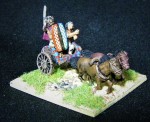 |
Yes, it was chariots - only 3 of them, with a supporting cast of Light Horse and Light Infantry as well Having struggled to wheel quickly enough - and also starting to have challenges of command and control as my force spread out across the table - I was however finding it difficult to get enough of my own chariots into the fray to make the weight of numbers count |
Seeing Cassivellaunus' command spread across the table with the main effort being put into dealing with the flank march, the rest of the previously hidden enemy army decided this was the ideal time to lurch forward out of their woodland hiding places and try to overwhelm the remaining half-command of chariots left facing them. Turning the tables on Cassivellaunus' Chariot Britons tactics, the Infantry Brits now greatly enjoyed the advantages of width !!
Even more Pedestrians emerged on the left, setting up a line of screaming hairy infantry which already threatened to overwhelm the shocked chariotry. Almost as importantly, this extra pressure on the command value of the CinC would make it far harder for the other part of his force to deal with the flank march in this Very British Civil War. The pedestrians had the strategic advantage, having waited for the right moment to spring their trap - but even so, Cassivellaunus' chariots would not be a pushover in the open. Whoever blinked first would be in trouble.... |
The flank march was doing well, as the element of surprise and the impetus from storming onto the table had set them up to roll great dice in some otherwise evenly matched battles. The Light Horse Lottery in particular had come up with a set of balls which matched all of the birthdays of the grandchildren of the Pedestrian British Light Horsemen, and they had overrun the Catuvellauni tribe's Chariotry Horsemen in short order. Would the second wave of chariots be able to pull things back for Cassivellaunus' men? |
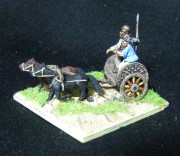 |
The Invasion of Britain
Struggling with the command and control challenges of fighting in two places with the same command, Cassivellaunus' chariots finally managed to join the fray and matched up against the flank march arrivees. Weight of numbers was now firmly in Cassivellaunus' men's favour, but even so the flank marchers were rolling stoutly and more than holding their own - somewhat aided by the rather haphazard and ad-hoc formation of the arriving forces which saw their Elite chariotry marginalised as the Ordinary ones were simply nearer to the front line and so thrown into combat first (The Elite chariots on my side have patterned edges to their whicker sides, the Ordinary ones are just plain brown).
Back in the main part of the field, the enemy were sweeping forward in a much more well-organised and well-planned fashion, their inclined line pushing past the right hand flank of Cassivellaunus' Chariotry. Their Elite infanbtry were also well positioned at the front and centre as their first wave of infantry charged home.
Cassivellaunus' chariots were looking extremely nervous as the wall of barbarian foot advanced towards them. Infantry skirmishers exchanged close range javelin fire as the two sides closed. Evading was clearly the sensible option here, but with the Catuvellauni tribe's Chariots moving 4 MU and the enemy Medium Infanntry moving 3 MU, a swing on the evade/charge variable distance dice could easily see the foot catch the battle carts.
On the left, Cassivellaunus' chariots were coming off worse in the battle against the foot emerging from the woods, and so elected to break off from combat and buy themselves a little more time. This retreat forced the rest of the body of chariots to turn and fall back as well, leaving one sacrificial unit as a forward blocker. His plan was to stand when the enemy charged - this would almost certainly lead to his doom, but the combined benefit of holding up part of the enemy advance and almost certainly breaking their formation into more pieces and increasing their command and control challenges was deemed worth the loss. Well, at least by Cassivellaunus. |
L'Art de la Guerre hint - A break off, or more technically a "disengage" in ADLG terms allows a unit in melee to disengage from combat. Not everyone can do it - but mounted troops (other than elephants and scythed chariots) against foot or slower mounted can do so. The unit spends pips and moves back 1 MU less than it's normal move distance. In this case it means the Chariots will stil be in charge range of the foot at the end of their disengage move. |
And, with the infantry stepping forward as expected, this was now the time for the chariotry to re-engage. They turned about and swept back into the line of scrimmage, easily co-ordinating a number of separate blocks of troops to arrive together in a reformed line through the exhortations of the Strategist commander. Even the micro command was able to get into the action by contributing Light Infantry as an overlap, and attempting a cheeky flank attack on the far left hand end of the enemy line as well. This could well prove be the decisive moment of the battle - the Catuvellauni tribe's chariots crashed into the enemy infantry with overlaps at both ends of the line!
And what would make the infantry vs chariot battle decisive was unfolding right now on the open flank. The enemy flank march had done well initially, but as more and more of Cassivellaunus' chariots had arrived and been fed into the melee the tide had inevitably turned and now the flank marcher expectations of success were a distant memory. Only a handful of Light Infantry remained, and a lone Light Horseman who was running scared from the pursuing chariots. |
 |
What had started off as a very effective distraction that had drawn away chariots from the centre of the table and undermined Cassivellaunus' command and control capacity had ended up being overrun, and racking up a serious amount of casulaties for the enemy army.
As the flank march slipped towards a total wipeout, the battle in the centre intensified and the losses continued to mount. An even exchange of hits and losses would suffice for Cassivellaunus here given the advantage the left flank had given his army - but the chariots were keen to win here as well. Inspired by their victory on the flank, and smelling the opportunity for a full 3-game winning slam Catuvellauni tribe's warriors overran the enemy pedestrians and racked up the hit markers along the whole line.
The Catuvellauni tribe's final coup de grace was delivered against the flank march, as the last unit needed to tip the enormous enemy army to defeat came somewhat fittingly as the chariots overran the entire open space and condemmed the infantry version of the army to defeat
The Result is a third win for Cassivellaunus !
Read on for the post match summaries from the Generals involved, as well as another episode of legendary expert analysis from Hannibal
Post Match Summary from the Ancient British Commander
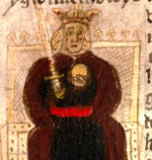 Jolly Hockey Sticks! What a spiffing and super win, to make it a full English hat-trick of victories, even though some of them were by quite narrow margins I think this does mean that Chariots mean Chariots and we need to carry on with this course of only using Chariots at all times, as this victory against another army from our home nation proves that we can take on the world.
Jolly Hockey Sticks! What a spiffing and super win, to make it a full English hat-trick of victories, even though some of them were by quite narrow margins I think this does mean that Chariots mean Chariots and we need to carry on with this course of only using Chariots at all times, as this victory against another army from our home nation proves that we can take on the world.
The success this will bring to our country will further underline our great potential to make trade deals around the world. In particular I am looking forward to introducing chariotry to South America, where if we can use our sales skills to sell chariots to a nation and continent which right now is lacking in horses, and in retun bring in chlorine-washed dice from the Aztecs the future will indeed be bright.
Whether I will actually be allowed out to wheel this army into the light of a full competition again is perhaps a more interesting point, as now my secret is out the possibility to secure empty fields for my wheeled warriors is going to get a lot more tricky.
But hey, let me bask in the hot soft light of 3 victories and a 2nd place final standing in this one day event!
Hannibal's Post Match Analysis
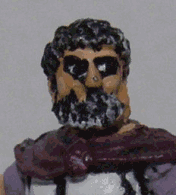 A third victory is not something to be sniffed at, and one in which the opposition attempted, with reasonable success, to secure suitable terrain for them and not for you is extremely encouraging - not only in terms of the result, but in terms of highlighting how finely balanced the terrain rules appear to be to give both sides a decent chance of getting what terrain they want even in such an asymetrical setup.
A third victory is not something to be sniffed at, and one in which the opposition attempted, with reasonable success, to secure suitable terrain for them and not for you is extremely encouraging - not only in terms of the result, but in terms of highlighting how finely balanced the terrain rules appear to be to give both sides a decent chance of getting what terrain they want even in such an asymetrical setup.
In this game the key factor turned out to yet again be the ability of your seemingly mono-dimensional force to concentrate its limited assets in such a way as to overwhelm what in normal circumstances would be a perfectly respectable flanking force. Indeed, arguably the opposition here had committed too many troops to their mounted command, and had they followed your lead and gone even bigger on the infantry and downsized the LH and Chariots it would have been much more challenging for you to rack up the necessary casulaties to break their army without taking many more risks against the wall fo coherent infantry.
The other good thing to come out of this was the overall feel of the army on the tabletop. To see the ebb and flow of the skirmishing chariots as they advanced and evaded, their ability to sweep round open flanks and harass and harry the enemy was almost cinematic at times, and yet they very much needed to do the teasing apart of the enemy force in order to create the opportunities for combat - no simple-minded frontal charge would have worked here, the work had to be put in first.
As one who has also bested Rome, I can see that this army would also cause many problems for an unprepared Roman commander, or indeed many of the Classical armies with their relatively limited mounted forces - but against a better mounted force, either with charging Impact cavalry, or even worse the shooting of something like the Huns or Sassanids you would be all at sea.
A fascinating display of how these rules work and allow all sorts of armies - in the right circumstances - to be succesful.
That's the end - so why not go back to the Match Reports Index and read some more reports?
Add your comments on these reports on the following forums
You may also like....
View My Stats for My Match Reports Pages


